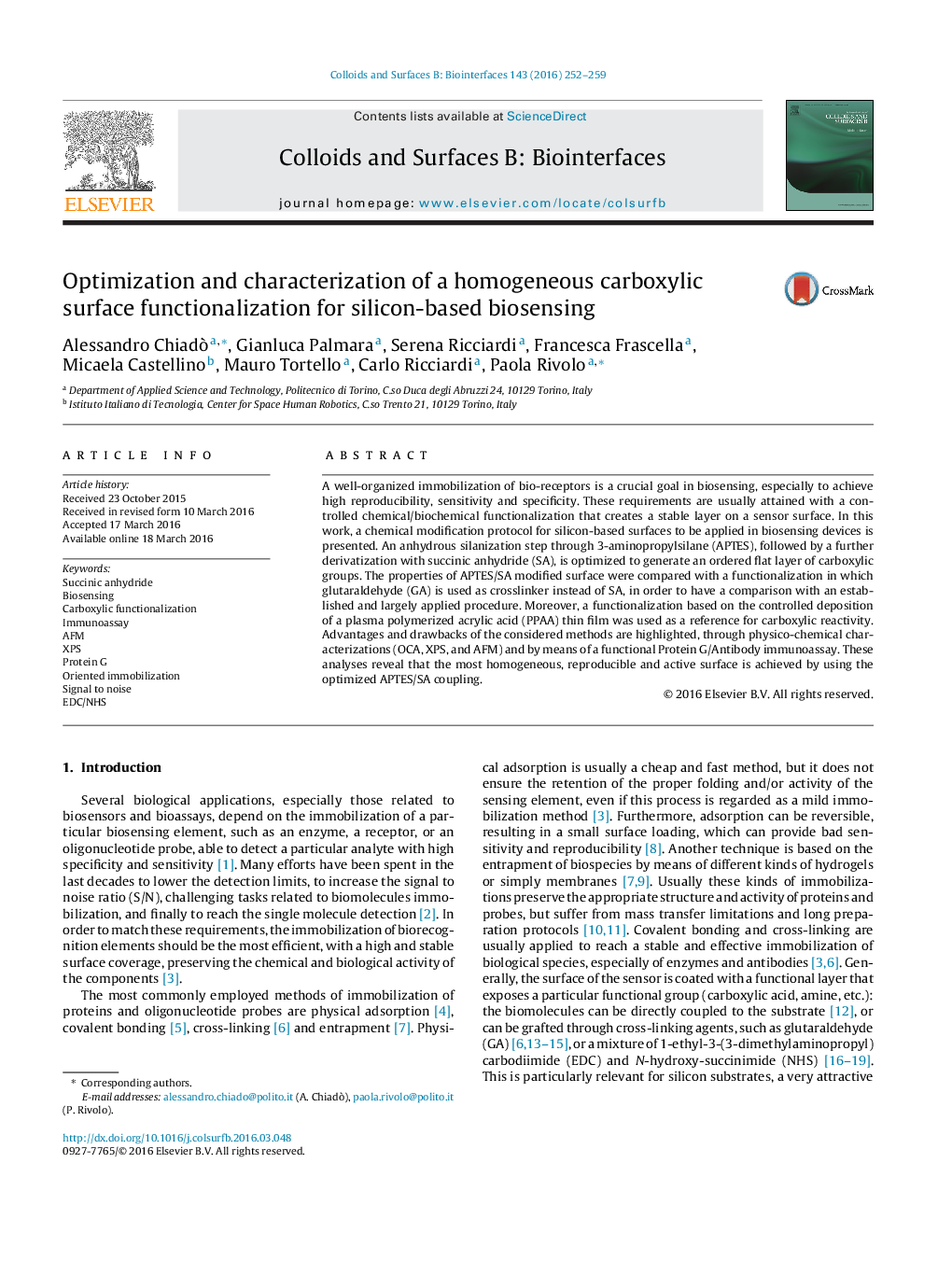| کد مقاله | کد نشریه | سال انتشار | مقاله انگلیسی | نسخه تمام متن |
|---|---|---|---|---|
| 599045 | 1454261 | 2016 | 8 صفحه PDF | دانلود رایگان |
• Succinic anhydride gives a reliable surface modification for silicon-based biosensing.
• High surface density of immobilized active biomolecules has been achieved.
• Biomolecules functionality was investigated through an ELISA-like bioassay.
• Exposed carboxylic groups were activated through an optimized EDC/NHS protocol.
• Signal to noise ratio has been maximized for biosensing applications.
A well-organized immobilization of bio-receptors is a crucial goal in biosensing, especially to achieve high reproducibility, sensitivity and specificity. These requirements are usually attained with a controlled chemical/biochemical functionalization that creates a stable layer on a sensor surface. In this work, a chemical modification protocol for silicon-based surfaces to be applied in biosensing devices is presented. An anhydrous silanization step through 3-aminopropylsilane (APTES), followed by a further derivatization with succinic anhydride (SA), is optimized to generate an ordered flat layer of carboxylic groups. The properties of APTES/SA modified surface were compared with a functionalization in which glutaraldehyde (GA) is used as crosslinker instead of SA, in order to have a comparison with an established and largely applied procedure. Moreover, a functionalization based on the controlled deposition of a plasma polymerized acrylic acid (PPAA) thin film was used as a reference for carboxylic reactivity. Advantages and drawbacks of the considered methods are highlighted, through physico-chemical characterizations (OCA, XPS, and AFM) and by means of a functional Protein G/Antibody immunoassay. These analyses reveal that the most homogeneous, reproducible and active surface is achieved by using the optimized APTES/SA coupling.
Figure optionsDownload as PowerPoint slide
Journal: Colloids and Surfaces B: Biointerfaces - Volume 143, 1 July 2016, Pages 252–259
